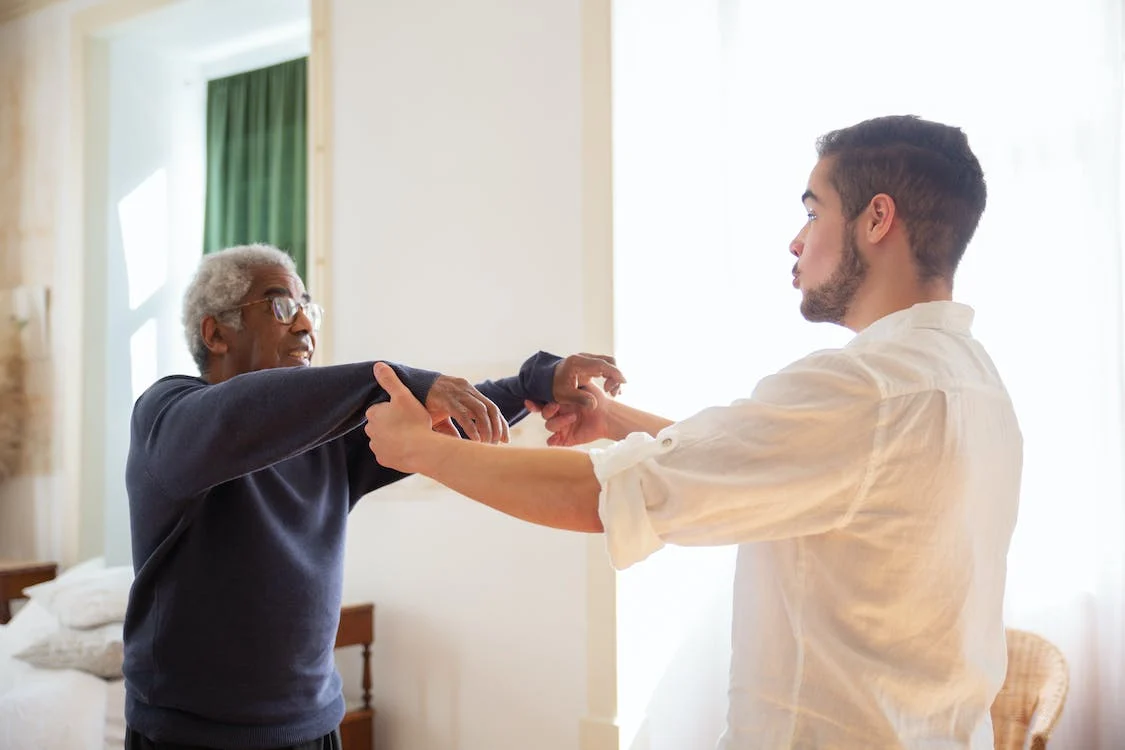Protecting Seniors During Cold Weather Months
Senior citizens are at a higher risk for injuries and health problems when the temperature drops. But with the right preparation, most of these injuries are preventable. Here are some common winter problems and the safety precautions that older adults should take to avoid them.
Hypothermia
Hypothermia happens when an individual’s body temperature drops to a hazardous level. This occurs because the body loses heat quickly when the person is out in the cold for a long time. Senior citizens are at higher risk for hypothermia. Remember that since it doesn’t happen instantly, you might miss the early signs.
Warning signs
Cold skin that turns ashy or pale, feeling exhausted, sleepy, weak, or confused. Heart rate and breathing could also slow down. Since older people shiver less, shivering is not a dependable sign.
Precautions to take
- Don’t spend time outside in the cold for long.
- Wear two or three layers of clothing instead of a single layer.
- Make sure that the indoor temperature is at least 65 degrees.
- Remain dry and change clothing if it gets wet.
- Wearing thermals will be an added advantage.
- Include gloves, hats, boots, scarves, and coats in your winter wear.
Frostbite
When skin damage due to extreme cold goes all the way to the bone, it’s referred to as frostbite. It usually occurs on parts of the body that are the farthest from an individual’s heart including the nose, chin, cheeks, fingers, ears, and toes. In extreme cases, it can also lead to the loss of limbs. Those with pre-existing cardiac conditions and circulatory problems are at a higher risk.
Warning signs
Skin turning white, ashy, or grayish-yellow or skin feeling waxy, numb, or hard.
Precautions to take
- Cover all parts of the body when going out in the cold.
- If you notice your skin turning red or dark or beginning to hurt, go indoors.
Injury while shoveling snow
Injuries can occur while shoveling. If you have no option but to shovel, make sure that you take adequate precautions. Aside from sprains or backaches, shoveling can be dangerous for those with heart disease or osteoporosis. Remember that the heart has to work hard to keep you warm outside.
Precautions to take
- If you have heart disease or ‘thin bones,’ get someone else to shovel.
- Ask your doctor if it’s safe for you to work in the snow.
Falls
Among senior citizens, around 36 million falls are reported each year. 300,000 older adults seek hospitalization for hip fractures each year. The risk is particularly high during winter since it’s easy to slip and fall in snowy and icy conditions.
Precautions to take
- Clear away salt and snow from walkways or get someone else to do it.
- Use footwear with non-skid soles.
- In case you use a can, change the rubber tip before it gets damaged.
- Use attachments to the end of your cane for added grip.
Fires and carbon monoxide poisoning
If fireplaces, gas appliances, and wood and gas stoves are not properly vented, any of these sources can leak carbon monoxide. What’s worrisome is that you can’t smell or see this deadly gas. Along with other appliances including space heaters, these can also become fire hazards.
Warning signs
Headache, nausea or vomiting, confusion, weakness, dizziness, loss of consciousness, and blurred vision.
Precautions to take
- Get a professional to inspect your flues and chimneys annually.
- If you use a kerosene stove, keep a window open.
- Strategically place battery-operated carbon monoxide detectors and smoke detectors.
- Keep your space heaters a minimum of three feet away from bedding, curtains, and furniture.
- Don’t use a charcoal grill, gas stove, or anything else not built for home heating.
Accidents while driving
Older adults are more involved in car crashes than any other age group. Since weather and road conditions may not be optimal, it’s important to take added precautions when driving in the winter months.
Precautions to take
- Check your tires, antifreeze, and windshield wipers before winter hits.
- Let others know where you will be driving to and when you will return.
- Don’t drive on icy roads and be careful on bridges and overpasses.
- Opt for longer routes if they have wider roads.
- Make sure that your vehicle has emergency supplies including a first aid kit, water, blankets, warm clothes, windshield scraper, booster cables, dried or canned food, map, flashlight, a bag of cat litter, sand, or rock salt in case your wheels were to get stuck, and a shovel.
In short
These precautions will go a long way in keeping senior citizens safe during winter.
Related Articles to Non-Medical Home Services
- Benefits of Home Care
- Home Health vs Home Care
- Home Health vs Hospice Care
- How to Introduce Home Care for Seniors
- Building a Care Plan-Working with a Home Care Provider to Create a Personalized Approach to Care
- Resistance to Home Care 2023
- Medicare Doesnt Cover Everything
- Adjusting to Assisted Living
- Warm Weather Tips for Seniors
- Winter Safety Tips for Seniors
- Fall Hazards
- Solution Home Care
- Caregiver Support Groups
- Caregiving During the Holidays
- Talking to Your Parents About Senior Care Options

